We live in a world where everyone and everything does more and more online. It makes sense, then, today’s world of digital advertising is constantly evolving; marketing trends change just as fast as the way consumers engage with digital information changes. Despite ever-evolving trends, one tactic has generated the most hype in the digital space as of late: programmatic advertising.
Not surprisingly, quality data has become one of the most valuable commodities in marketing, which is why native advertising is leading these efforts. So what does programmatic advertising have to do with native? Programmatic advertising is an automated form of purchasing digital media inventory based on audience-focused factors. Instead of relying on manually securing digital ad placements, programmatic uses automated technology to scan millions of websites in order to purchase and deliver a digital ad. Native advertising, on the other hand, is a customized form of advertising, where the ad matches the form and function of the content surrounding it.
Both support content marketing, but when combined, ‘programmatic native advertising’ can be a significant and highly powerful tool in the digital space. Programmatic native advertising intends to make media buying simpler by innovating and optimizing how companies reach out to and connect with prospective customers—it leverages real-time customer data and insights to target the right users at the right times, making sure each ad is contextually relevant.

A survey by Dun & Bradstreet found that 78% of B2B marketers planned to spend up to half of their advertising budgets on programmatic this year, with 66% of those marketers believing that programmatic is just as valuable to them as it is to B2C marketers. And, since the digital universe is doubling in size every two years, according to EMC, it will contain about 44 billion gigabytes of information by 2020. No wonder more marketers are seeing value in a more automated solution, right?
Yet despite the hype, many wonder if the programmatic marketing initiative is just another fleeting trend. We know it’s more than just a hot topic; programmatic native advertising is here to stay and we’ve only just seen the tip of the iceberg.
“It’s still the early days for content marketing and programmatic native advertising, so we envision continued growth for the next few years,” says Storygize CEO David Osman, “There’s a lot hiding beneath the surface, and we’re excited about the growth indicators.”
Why Programmatic Native Advertising is here to stay:
It’s highly targeted.
Quality content is one thing, but getting your content in front of the right audience will make all the difference. Programmatic offers real-time opportunities to target specific customers based on data-driven insights. So not only does it support contextually relevant ads, but it makes sure those ads reach only the people you want to target.
It will help narrow down your audience.
Defining the right audience is the first crucial step in executing programmatic, and data is essential for targeting the right people. Programmatic native lets you dive a little deeper to define your audience and improve engagement levels. What’s more, you will gain valuable insights about your audience as they walk through the buyer’s journey, providing them with personalized content along the way. More relevant content leads to more engaged users.
“Native advertising empowers companies to have a true conversation with customers by sharing unique and valuable stories throughout the buyer’s journey, instead of simply shouting a sales message.” –David Osman, CEO of Storygize
It opens doors for new prospects.
Programmatic allows you to effectively find the right customers in the right environments—environments you may not have otherwise been exposed to—opening doors for your brand to engage new prospects across the web.
It optimizes in real-time.
Because programmatic native advertising relies on real-time data to inform, you can monitor the ad campaign as it runs (not after the fact), allowing for continual optimization of a campaign’s performance.
It’s cost-effective.
Not all data is created equal. Programmatic leverages first- and third-party data for optimal targeting, so you can maximize the efficiency of your ad spend. No more paying for impressions that aren’t targeting the right buyers! Programmatic native advertising makes sure each ad is contextually relevant to your target audience, so you don’t buy what you don’t need.
Although the digital advertising industry has grown rapidly, bringing new marketing trends to the forefront, programmatic native advertising is more than just a trend—it allows companies to generate leads and sales in ways the manual buying of ad space simply can’t, and we’re sure it has lasting potential. If data drives more informed decisions, then programmatic is the vehicle for utilizing that data to reach the right audience in a much more cost-effective way. In short, it’s a new way to amplify your content and build new relationships with customers while saving budget along the way.
This post is about: native advertising, native ads, native ad platforms, native ad mistakes, native advertising best practices, programmatic advertising, programmatic native advertising, customer experience, and content marketing.
***
To learn more about how programmatic native advertising offers both media buyers and content marketers an exciting new paid media channel to promote and distribute content online, check out Storygize's eBook, Go Native: Effective Content Promotion and Customer Engagement.
Storygize is more than a platform; we're a strategic partner that empowers growth. Our team is happy to help brands create a strategy that aligns with brand objectives and then execute in an iterative, evolving approach to ensure exposure to targeted audiences where they consume relevant content.
We love feedback! Feel free to comment below.

